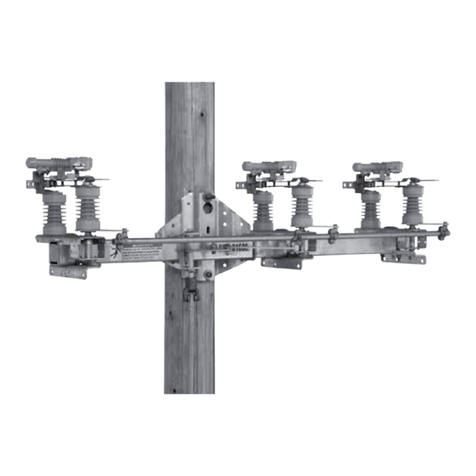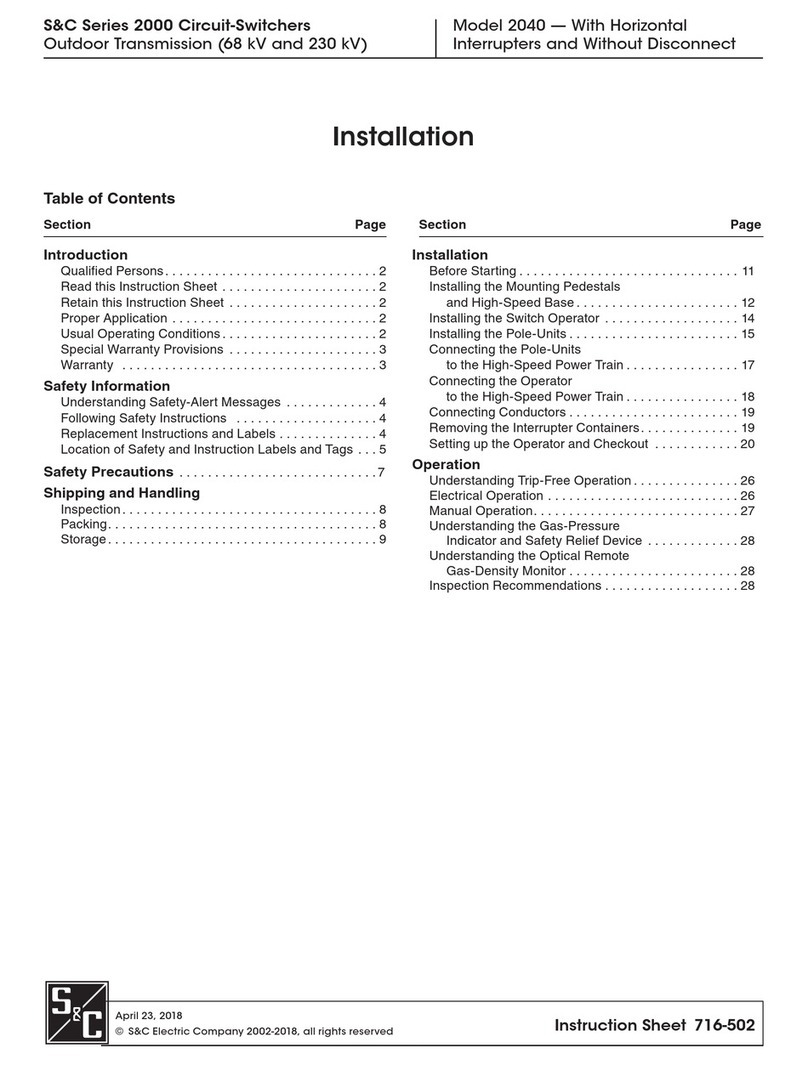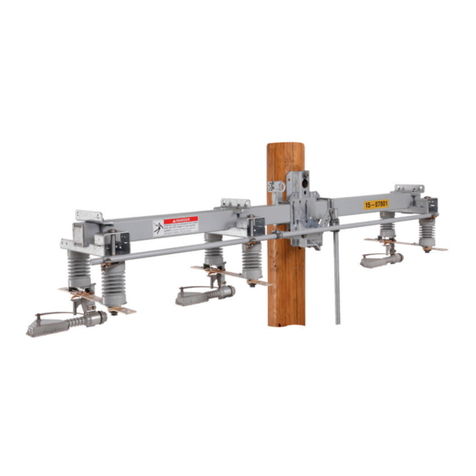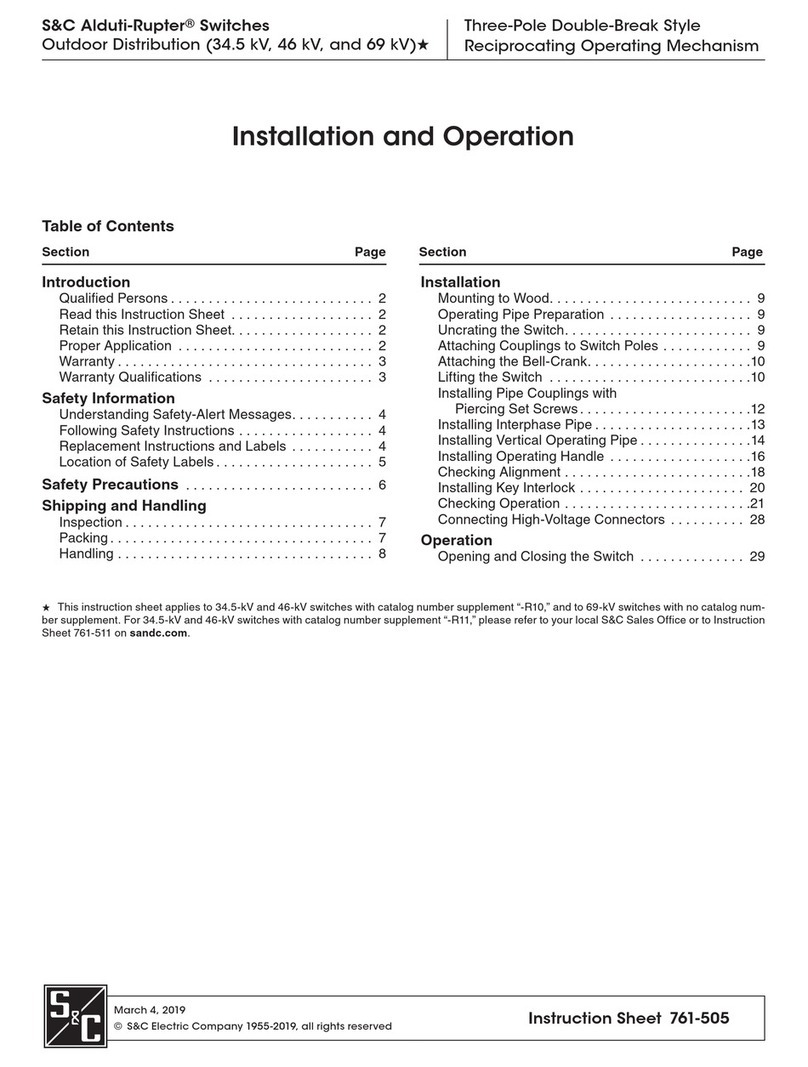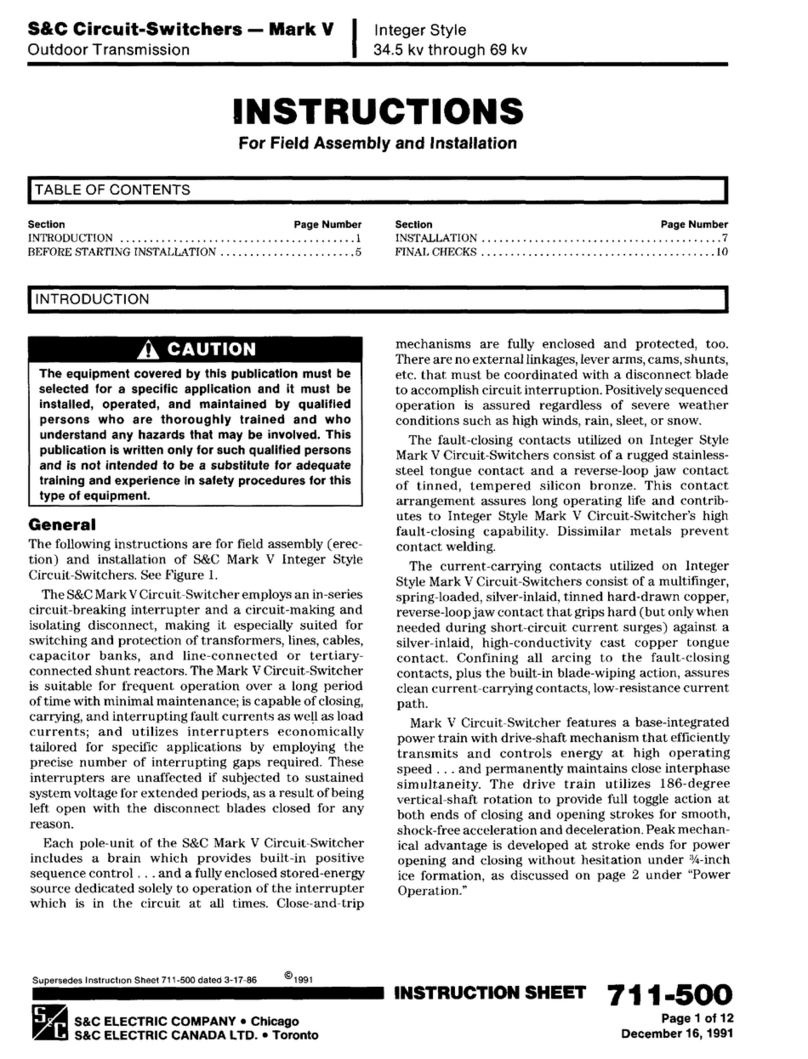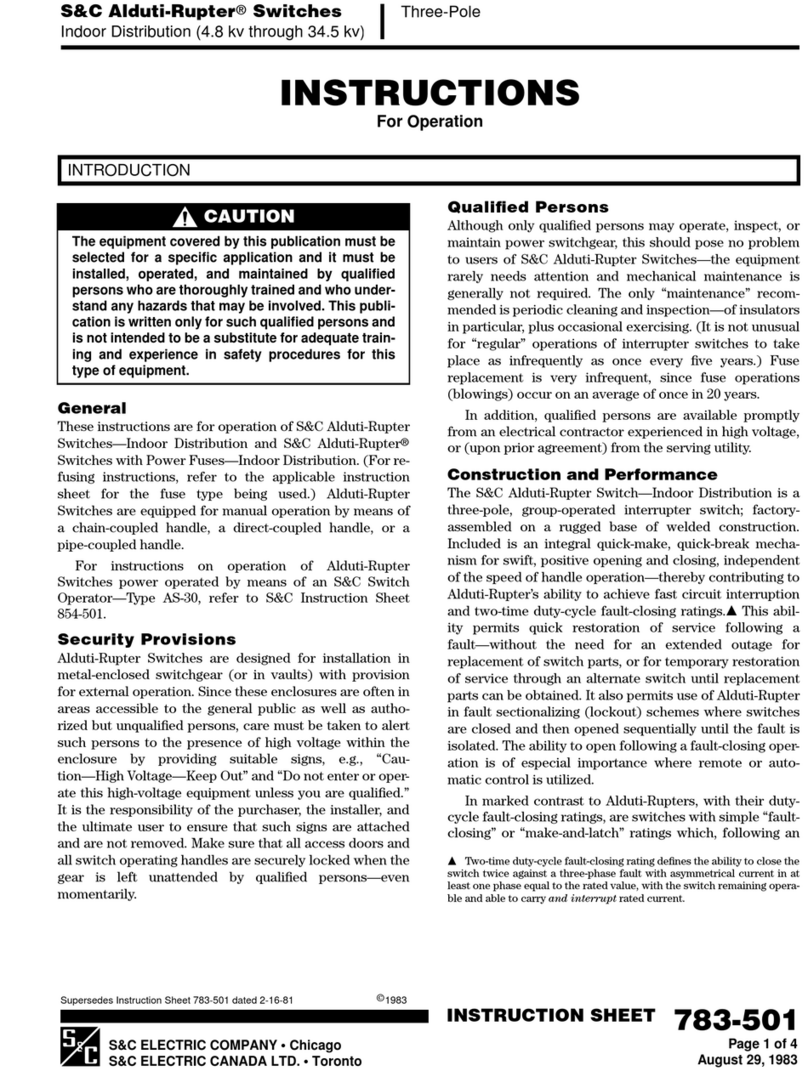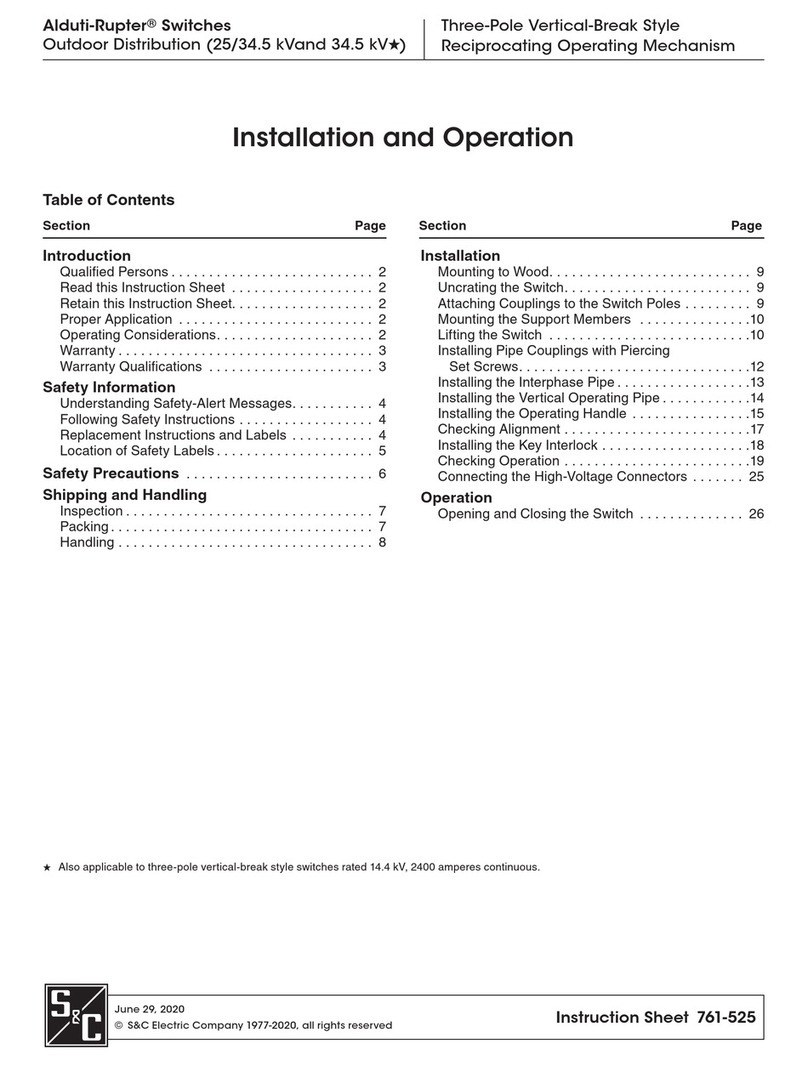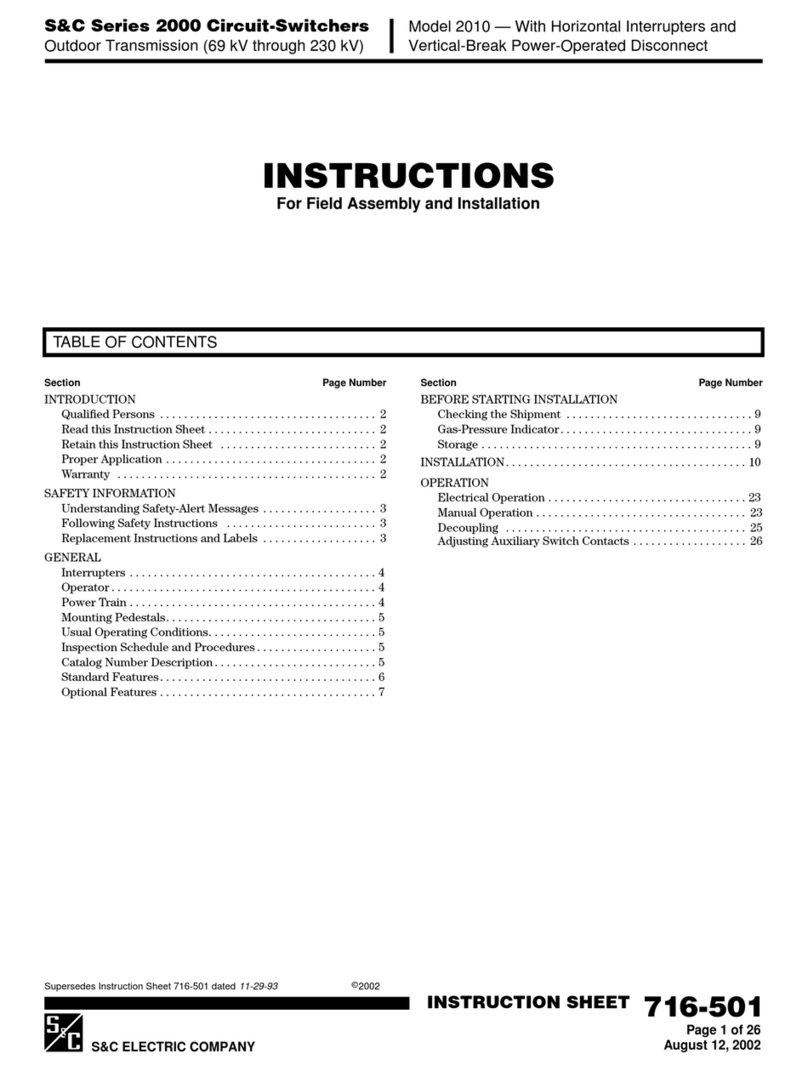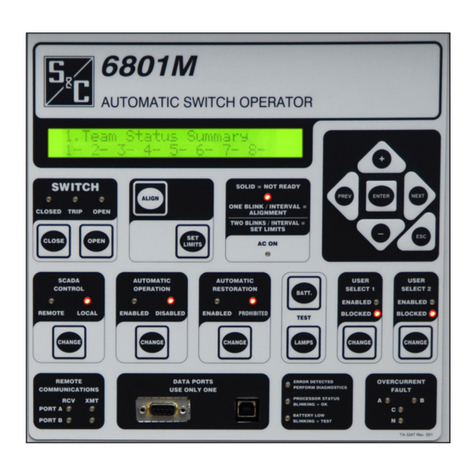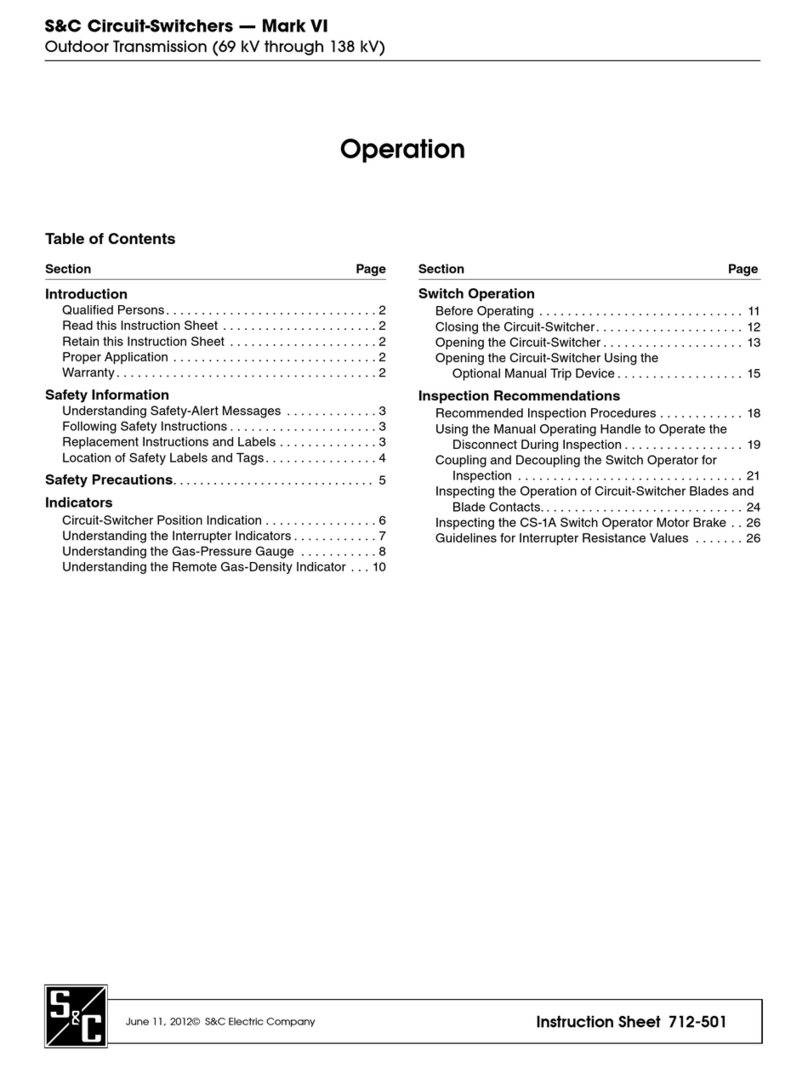
6 S&C Instruction Sheet 719-501
Safety Precautions
DANGER
Mark V Circuit-Switchers operate at high voltage� Failure to observe the
precautions below will result in serious personal injury or death�
Some of these precautions may differ from company operating procedures and rules�
Where a discrepancy exists, follow your company’s operating procedures and rules�
1�
QUALIFIED PERSONS� Access to Mark V Circuit-
Switchers must be restricted only to qualified
persons� See the “Qualified Persons” section on
page 2�
2�
SAFETY PROCEDURES� Always follow safe
operating procedures and rules�
3� PERSONAL PROTECTIVE EQUIPMENT� Always
use suitable protective equipment, such as rubber
gloves, rubber mats, hard hats, safety glasses, and
flash clothing, in accordance with safe operating
procedures and rules�
4�
SAFETY LABELS� Do not remove or obscure any of
the “DANGER,” “WARNING,” “CAUTION,” or
“NOTICE” labels�
5�
OPERATING MECHANISM AND BASE� Mark V
Circuit-Switchers contain fast-moving parts that
can severely injure fingers� Do not remove or
disassemble operating mechanisms or remove
access panels unless directed by S&C Electric
Company�
6�
ENERGIZED COMPONENTS� Always consider all
parts of the circuit-switcher live until de-energized,
tested, and grounded� Voltage levels can be as high
as the peak line-to-ground voltage last applied to
the unit� Units that have been energized or installed
near energized lines should be considered live until
tested and grounded�
7� GROUNDING� The Mark V Circuit-Switcher must
be connected to a suitable earth ground at the base
of the utility pole, or to a suitable building ground
for testing, before energizing the switch and at all
times when energized� The vertical operating shaft
above the Type CS-1A Switch Operator must also
be connected to a suitable earth ground�
The ground wire(s) must be bonded to the system
neutral, if present� If the system neutral is not
present, proper precautions must be taken to ensure
the local earth ground, or building ground, cannot
be severed or removed�
8�
SWITCH POSITION� Always confirm the Open/
Close position of each switch�
•
Switches and terminal pads may be energized
from either side�
•
Switches and terminal pads may be energized
with the switches in any position�
9�
MAINTAINING PROPER CLEARANCE� Always
maintain proper clearance from energized
components�


